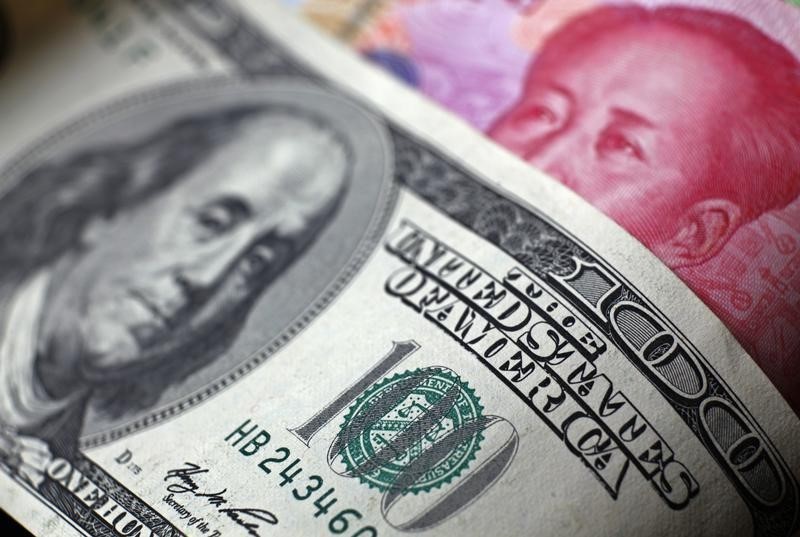Adaptimmune stock plunges after announcing Nasdaq delisting plans
Investing.com-- Most Asian currencies moved little on Monday as markets took some positive cues from U.S. officials downplaying the threat of a trade war with Beijing, while some positive economic data from China also lent support.
The Japanese yen lagged, weakening slightly amid renewed bets that Liberal Democratic Party leader Sanae Takaichi will be appointed the country’s next prime minister.
Most regional currencies logged some strength last week as the dollar weakened amid growing conviction that the Federal Reserve will cut interest rates later in October. But the greenback steadied on Monday, with focus remaining on U.S.-China trade talks and an ongoing U.S. government shutdown.
The dollar index and dollar index futures inched higher in Asian trade on Monday.
Chinese yuan mildly positive as Q3 GDP beats expectations
The Chinese yuan’s USD/CNY pair fell marginally after gross domestic product data for the third quarter read mildly above expectations.
GDP grew 4.8% year-on-year, more than forecasts of 4.7% but slower than the 5.2% growth in the second quarter. The print was also China’s weakest GDP reading since Q3 2024.
Still, China’s year-to-date GDP remained above Beijing’s 5% annual target, with ANZ analysts stating that GDP was likely to at least meet the target in 2025. Chinese exports were a key driver of the GDP print, while headwinds from weak spending and private investment remained.
Other economic prints showed some strength in September, with industrial production and retail sales growing more than expected. But fixed asset investment– a key gauge of business spending– shrank for the first time since the 2020 COVID-19 pandemic.
The print highlighted a growing dependence in Chinese economic growth on exports, with analysts warning that this trend was unlikely to be sustainable. Capital Economics analysts said that more stimulus measures from Beijing were required to keep growth positive.
China’s exports also face more potential headwinds from a trade war with the U.S., after President Donald Trump threatened 100% tariffs against Beijing over its rare earth export curbs. But Trump was seen tempering his stance last week, while also signaling that high-level talks with Beijing remained on track.
Trump’s conciliatory tone on China helped spur some optimism in Asian markets. The Australian dollar, a gauge of Asian risk appetite, advanced on Monday, with the AUD/USD pair adding 0.1%.
The South Korean won’s USD/KRW pair fell 0.1%, as did the Taiwan dollar’s USD/TWD.
The Indian rupee’s USD/INR pair fell 0.1% in early trade, after apparent central bank intervention helped the currency recoup some lost ground.
But sentiment towards India remained on the backfoot, after Trump said in a weekend interview that high U.S. tariffs on Indian goods– which stand at as high as 50%-- will remain until New Delhi ceases its buying of Russian oil.
Japanese yen weakens as Takaichi bets resurge
The Japanese yen lagged its Asian peers, with the USD/JPY pair rising 0.1% on Monday.
The yen was hit by renewed confidence in Takaichi’s premiership, after the LDP over the weekend was seen gaining enough support from its allies to form a coalition government.
Doubts over Takaichi’s premiership had emerged last week, offering the yen some respite. But the currency is now expected to weaken ahead of a parliamentary session on Takaichi’s appointment this week.
Takaichi is widely viewed as a fiscal dove, pointing to more government spending and accommodative financial conditions in the coming months. Takaichi is also expected to oppose more interest rate hikes by the Bank of Japan, with the central bank set to decide on the matter next week.
